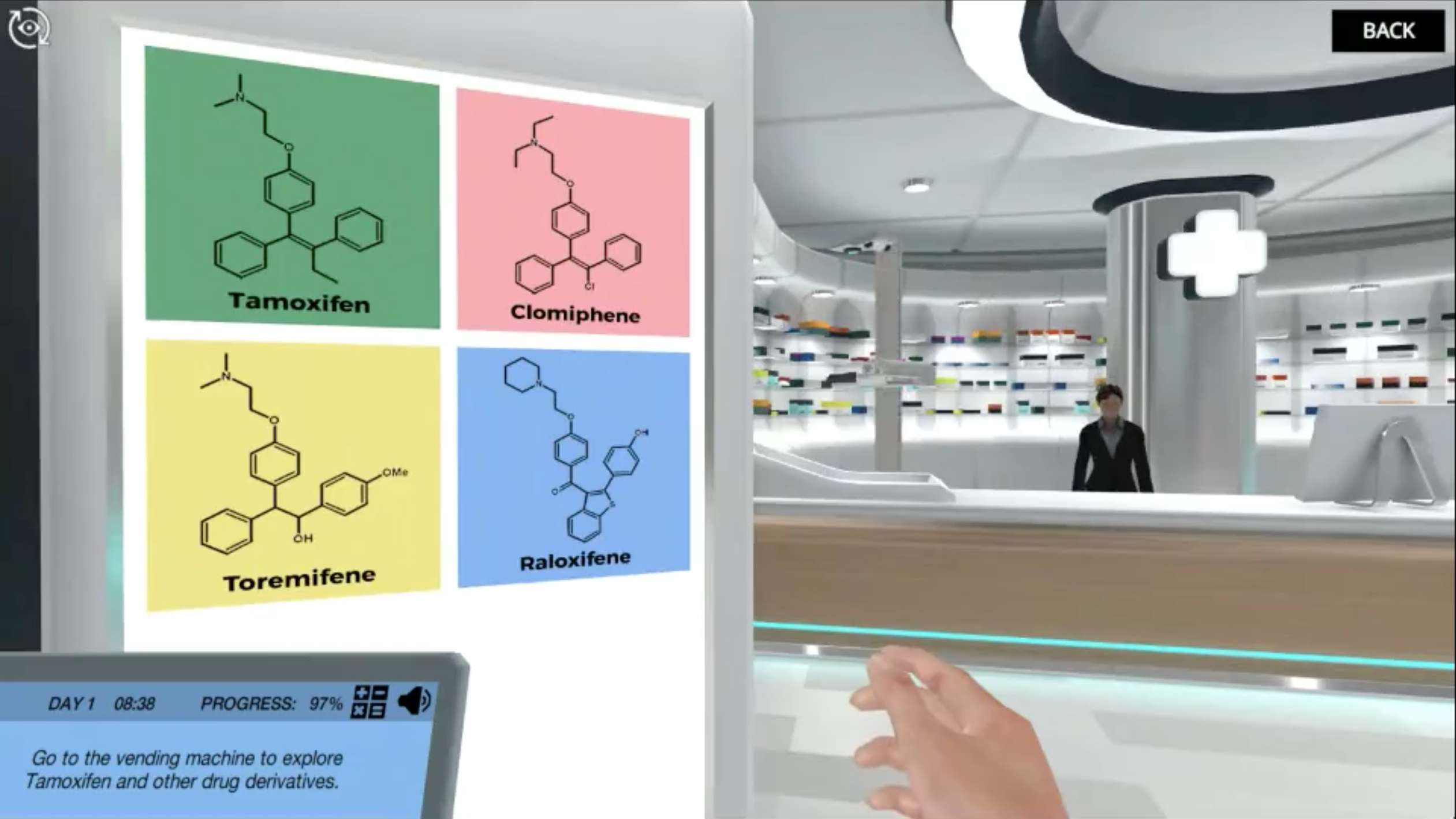Heading 1
Heading 2
Heading 3
Heading 4
Heading 5
Heading 6
Lorem ipsum dolor sit amet, consectetur adipiscing elit, sed do eiusmod tempor incididunt ut labore et dolore magna aliqua. Ut enim ad minim veniam, quis nostrud exercitation ullamco laboris nisi ut aliquip ex ea commodo consequat. Duis aute irure dolor in reprehenderit in voluptate velit esse cillum dolore eu fugiat nulla pariatur.
Block quote
Ordered list
- Item 1
- Item 2
- Item 3
Unordered list
- Item A
- Item B
- Item C
Bold text
Emphasis
Superscript
Subscript
About This Simulation
Assist scientists on a drug discovery project and learn how to use nucleophilic addition to transform organic molecules into life-saving drugs! Will you be able to synthesize a new pharmaceutical product using the Grignard reaction?
Learning Objectives
- Demonstrate a detailed understanding of the nucleophilic addition reaction
- Provide an overview and examples of nucleophilic addition to a carbonyl group
- Draw correctly the mechanism for common nucleophilic addition reactions
- Demonstrate a detailed understanding of the Grignard reaction
- Describe the role of each reagent in the Grignard reaction
- Explain the sensitivity of Grignard reaction conditions and be able to make procedural adjustments
- Gain understanding and practical experience of essential laboratory techniques:
About This Simulation
Lab Techniques
- Reflux technique
- Synthesis and use of Grignard reagent in situ
- Air- and moisture-sensitive synthesis
Related Standards
- No direct alignment
- No direct alignment
- No direct alignment
Learn More About This Simulation
Addition reactions are one of the greatest tools in a medicinal chemists’ toolkit! In this simulation, you will learn the principles of the nucleophilic addition reaction and put your knowledge into practice by performing a Grignard reaction to synthesize a potential cancer drug candidate. You’ll have the chance to make a ground-breaking drug discovery!
Last-ditch drug discovery
Join scientists in a drug discovery team as they investigate one last hunch before the failing project is shut down. Students will get hands-on in exploring the nucleophilic addition reaction in a pharmaceutical research lab, and apply their knowledge to help synthesize a molecule with therapeutic potential. To transform the existing ketone into the target alcohol, students will develop their practical and theoretical knowledge of the Grignard reaction.
Nucleophilic addition - experiment and explore!
Interact with nucleophilic addition reaction components at a molecular level with our 3D reaction visualizer. Identify important reaction components before triggering the electron flow to carry out the reaction before your eyes! Get up close with the mechanistic principles of nucleophilic addition and better acquainted with molecular-level reactivity considerations.
You’ll also have the chance to give a Grignard reaction a go in a safe and instructive lab environment. Synthesize your moisture-sensitive Grignard reagent in situ before using it directly in a Grignard reaction to get one step closer to your target molecule. Prompts from Dr. One will remind you of the tricky practical aspects to remember for a successful Grignard reaction!
Pharmaceutical scale-up
To complete the simulation you’ll investigate factors you’ll need to consider in scaling up the Grignard reaction to an industrial scale if the drug is shown to be a ‘hit’. Will you be able to design a synthesis for an effective treatment for breast cancer?
For Science Programs Providing a Learning Advantage
Boost STEM Pass Rates
Boost Learning with Fun
75% of students show high engagement and improved grades with Labster
Discover Simulations That Match Your Syllabus
Easily bolster your learning objectives with relevant, interactive content
Place Students in the Shoes of Real Scientists
Practice a lab procedure or visualize theory through narrative-driven scenarios


FAQs
Find answers to frequently asked questions.
Heading 1
Heading 2
Heading 3
Heading 4
Heading 5
Heading 6
Lorem ipsum dolor sit amet, consectetur adipiscing elit, sed do eiusmod tempor incididunt ut labore et dolore magna aliqua. Ut enim ad minim veniam, quis nostrud exercitation ullamco laboris nisi ut aliquip ex ea commodo consequat. Duis aute irure dolor in reprehenderit in voluptate velit esse cillum dolore eu fugiat nulla pariatur.
Block quote
Ordered list
- Item 1
- Item 2
- Item 3
Unordered list
- Item A
- Item B
- Item C
Bold text
Emphasis
Superscript
Subscript
A Labster virtual lab is an interactive, multimedia assignment that students access right from their computers. Many Labster virtual labs prepare students for success in college by introducing foundational knowledge using multimedia visualizations that make it easier to understand complex concepts. Other Labster virtual labs prepare learners for careers in STEM labs by giving them realistic practice on lab techniques and procedures.
Labster’s virtual lab simulations are created by scientists and designed to maximize engagement and interactivity. Unlike watching a video or reading a textbook, Labster virtual labs are interactive. To make progress, students must think critically and solve a real-world problem. We believe that learning by doing makes STEM stick.
Yes, Labster is compatible with all major LMS (Learning Management Systems) including Blackboard, Canvas, D2L, Moodle, and many others. Students can access Labster like any other assignment. If your institution does not choose an LMS integration, students will log into Labster’s Course Manager once they have an account created. Your institution will decide which is the best access method.
Labster is available for purchase by instructors, faculty, and administrators at education institutions. Purchasing our starter package, Labster Explorer, can be done using a credit card if you are located in the USA, Canada, or Mexico. If you are outside of North America or are choosing a higher plan, please speak with a Labster sales representative. Compare plans.
Labster supports a wide range of STEM courses at the high school, college, and university level across fields in biology, chemistry, physics, and health sciences. You can identify topics for your courses by searching our Content Catalog.















